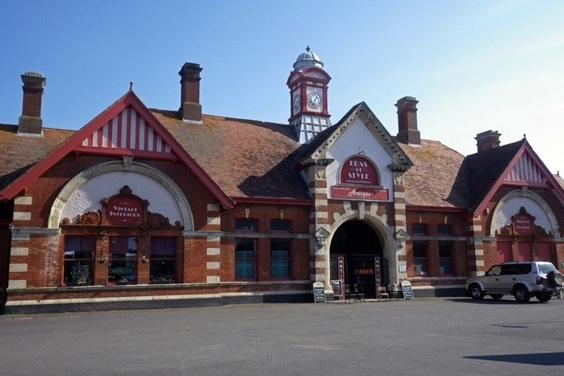Some beautiful looking stations have been rep-purposed as shops or homes, some are abandoned and derelict and the sites of others remain only as a patch of countryside where you would never know that a station existed.
In some cases whole lines have disappeared, such as the Cuckoo line, which ran from Polegate to Uckfield and the line from Bexhill West Station that ran through Bodiam and then into Kent.
Britain’s railways came as a result of the industrial revolution and helped to create the wealth of the country. The first steam railway locomotive which was introduced by Richard Trevithick in 1804.
During the 1960’s, the increasing number of motor cars saw people looking toward the roads rather than the railway. A landmark report by then head of British Rail, Richard Beeching, led to the closure of many stations and whole branch lines in the 60s. Many architectural treasures, and the memories they contained, have been lost forever.
Have you read? Take a look inside this Grade 2 listed ten bedroomed Georgian mansion in a small Sussex village

1. Barcombe Mills Station
Barcombe Mills station, on The Wealden Line, was opened in 1858 and closed in 1969. The station is actually situated almost a mile to the south-east of Barcombe village. It was always a popular station for anglers who were able to fish for trout in the nearby River Ouse. The station buildings are now private homes. Photo: supplied

2. Bexhill West Station
The station opened in 1902 and closed to passengers in 1964. It was built of yellow and red brick and Bath Stone dressing. Welsh slate was used on the roof which is crowned by a clocktower, and the main entrance features a block-moulded pediment. The symmetrical building comprised a large and airy booking hall, ticket and parcels offices, a waiting room and ladies toilet, as well as the stationmaster's and inspector's offices Photo: supplied

3. Barcombe Station
Barcombe was a railway station serving the village of Barcombe. It was part of the East Grinstead to Lewes line, part of which now makes up the Bluebell Railway. It closed on May 29 1955. Barcombe station building was sold and was converted into a private house. The platform edge is still visible but the trackbed has been infilled Photo: supplied

4. Bishopstone Beach Halt
Bishopstone Beach Halt opened on 1 June 1864 and closed on 1 January 1942. The station was built on the Seaford Branch Line for residents of the Bishopstone and Tide Mills villages and located on the west side of Mill Drove. The company that operated the trains on opening was the London Brighton & South Coast Railway, later merged into the Southern Railway. The station was built primarily for the 60-100 workers at the mills. After the mills closed 1883 it became used mainly by holiday passengers Photo: supplied